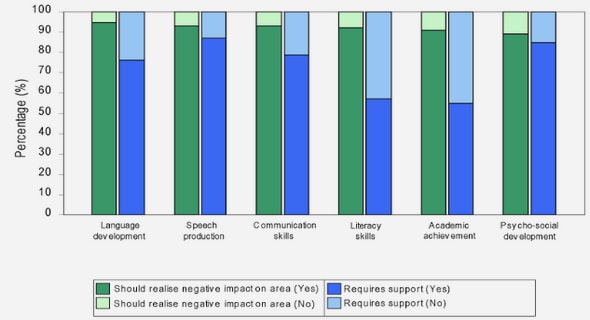(Downloads - 0)
For more info about our services contact : help@bestpfe.com
Table of contents
CHAPTER 1. REVIEW OF LITERATURE
1. Importance of soil food web in soil plant nutrient cycling
2. Components of soil food web
2.1. Bacteria
2.2. Fungi and mycorrhizal symbiosis
2.2.1. Classification of mycorrhizal roots
2.2.2. Formation of mycorrhizal roots
2.2.3. Nutrient exchange in mycorrhizal roots
2.3. Nematodes
2.4. Protozoa
3. Functionning of soil food web in rhizosphere
3.1. Importance of rhizosphere in microbial populations
3.2. Role of soil food web in root architecture and growth
3.3. Role of soil food web in rhizosphere N cycle
3.4. Role of ectomycorrhizal symbiosis on N cycling
3.5. Role of soil food web in rhizosphere P cycle
3.6. Role of mycorrhizal symbiosis on P cycling
4. Hypothesis and objectives of thesis
5. References
CHAPTER 2. MATERIAL AND METHODS
1. Biological material and culture method in routine conditions
1.1. Plant and fungus
1.1.1. Seed germination
1.1.2. Fungal cultures
1.1.3. Mycorrhizal synthesis
1.2. Bacteria
1.3. Nematodes
1.3.1. Isolation and multiplication of nematodes
1.3.2. Sterilization and testing of nematodes with Bacillus subtilis (111b)
2. Specific culture conditions
2.1. 15N labeling of bacteria
2.2. Phytate medium
2.3. Co-inoculation media
2.4. Co-inoculation experiment design
3. Quantitative assessment of microbial populations
3.1. Bacteria
3.2. Nematodes
3.3. Ectomycorrhizal degree
3.3.1. Acid hydrolysis
3.3.2. Colorimetric assay
4. Molecular methods
4.1. Bacteria
4.2. Nematodes
5. Plant and medium analysis
5.1. Root parameters and plant harvest
5.2. Solution extraction from solid medium
6. Chemical measurements
6.1.1. Nitrogen
6.1.1.1. 15N and total N
6.1.1.2. Free ammonium
6.1.1.3. Nitrate
6.1.2. Phosphorus
6.1.3. Sodium
7. Statistical analysis
8. References
CHAPTER 3 Grazing by nematodes on rhizosphere bacteria enhances nitrate and phosphorus availability to Pinus pinaster seedlings
1. Abstract
2. Introduction
3. Materials and methods
3.1. Plant production
3.2. Bacteria
3.3. Isolation, multiplication and identification of nematodes
3.4. Experimental design
3.5. Sampling and analytical procedures
3.6. Statistical analysis
4. Results
4.1. Nematode abundance
4.2. Shoot biomass and root parameters
4.3. 15N accumulation in shoot biomass
4.4. Nutrient accumulation in shoot biomass
5. Discussion
5.1. Nematode population
5.2. Effects of bacteria and bacteria plus nematodes on P. pinaster development
5.3. Effects of inoculation on the fate of bacterial 15N and N nutrition of P. pinaster seedlings
5.4. Effects of inoculation treatments on P nutrition of P. pinaster seedlings
6. Conclusion
7. Acknowledgements
8. References
CHAPTER 4 Phosphorus is required to the operation of microbial loop in the rhizosphere, independently of N availability
1. Abstract
2. Introduction
3. Material and methods
3.1. Fungal and plant material
3.2. Bacterial strain and nematode
3.3. Experimental design for co-inoculation
3.4. Medium nitrate measurement
3.5. Plant analysis
3.6. Bacterial and nematode populations
3.7. Statistical analysis
4. Results
4.1. Assimilation of 15NH4 + and phosphorus in bacterial biomass
4.2. Plant parameters
4.2.1. Root architecture
4.2.2. Plant biomass and N accumulation
4.2.3. P accumulation
4.2.4. 15N accumulation in root and shoot biomass
4.3. Nitrate concentration in medium
4.4. Abundance of bacteria and nematodes
5. Discussion
5.1. Root architecture and plant growth
5.2. Total N and 15N accumulation
5.3. P accumulation
5.4. Populations of bacteria, nematode grazers and 15N and P mineralization
6. Acknowledgement
7. References
CHAPTER 5 Phosphorus acquisition from phytate depends on efficient bacterial grazing, irrespective of the mycorrhizal status of Pinus pinaster
1. Abstract
2. Introduction
3. Material and methods
3.1. Fungal and plant material
3.2. Bacterial strain and nematodes
3.3. Experimental design for co-inoculation
3.4. Use of phytate by the fungus, the bacteria and the nematodes without plant
3.5. Plant analysis
3.6. Bacterial and nematode populations
3.7. Statistical analysis
4. Results
4.1. Use of phytate by microbial partners in pure culture
4.2. Effect of food web complexity on root development, plant growth and mineral nutrition
4.3. Evolution of bacterial and nematode populations in presence of P. pinaster seedlings
5. Discussion
5.1. Effect of plant and ectomycorrhizal symbiosis on bacterial and nematode populations
5.2. P accumulation and plant growth
5.3. Effect of food web on root growth and P acquisition
6. Acknowledgement
7. References
Supplimentary data
CHAPTER 6 Sodium toxicity and phytate use in the rhizosphere: a helping hand by microbial partners
1. Abstract
2. Introduction
3. References
GENERAL CONCLUSIONS AND PERSPECTIVES
1. Conclusions
1.1. Direct contribution of bacteria and nematode grazers in N & P mineralization and mineral nutrient acquisition by plants
1.2. Role of fungi, bacteria and their nematodes grazers on plant growth and root architecture
1.3. Evolution of bacteria and nematodes in different nutrient environment during plant growth
2. Perspectives
2.1. Nematode enzymatic activiy
2.2. Bacterial phosphorus labeling (32/33P)
2.3. Soil utilization as growth medium
2.4. Contribution of ectomycorrhizal symbiosis to N and P flow to the plant
3. References



